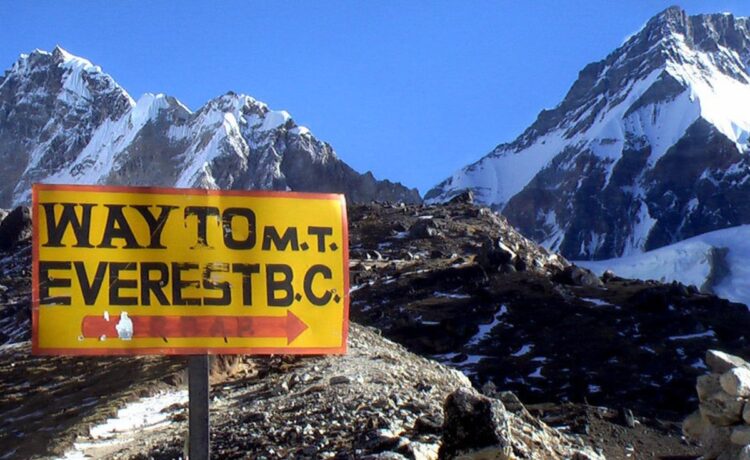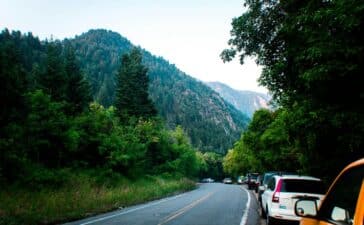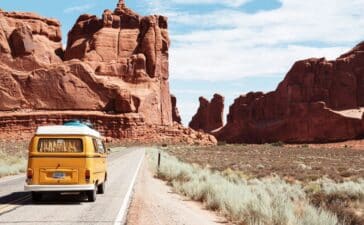Table of Contents
Introduction
Are you looking for an adventure of a lifetime? The only route is the trek to Everest Base Camp! This legendary walk, one of the most well-known in the world, attracts hundreds of hikers each year. But before you pack your bags and hit the trail, it’s important to understand Everest Base Camp Trek Cost what’s included (and what isn’t) in the fee. This blog post will cover all the necessary information regarding how much an Everest Base Camp climb will cost, as well as some tips for saving money. So let’s embark on this wonderful journey together!

What’s Included in the Cost of an Everest Base Camp Trek?
When planning an Everest Base Camp trek, it’s essential to understand what is included in the cost. The price of an EBC trek typically covers all necessary permits and fees for the Khumbu region. This includes a Sagarmatha National Park permit, TIMS card, and a climbing permit if you plan on summiting any nearby peaks.
The cost also includes transportation from Kathmandu to Lukla via plane or helicopter, depending on your preference. Throughout the trek, accommodation at tea houses or lodges along with meals are also provided as part of the package.
Additionally, most tour companies provide experienced guides who will help you navigate through each stage of your journey safely. These guides often have extensive knowledge about local culture and customs as well as first aid training.
Many packages offer porter services to carry your gear throughout the trek so that you can focus solely on enjoying the experience without worrying about physical strain.
Understanding what is included in an Everest Base Camp Trek cost helps determine which package best suits your needs while budgeting accordingly.

What’s Not Included in the Cost of an Everest Base Camp Trek?
Even while the expense of an Everest Base Camp hike may initially appear prohibitive, it’s crucial to know what is and isn’t included by that amount. Even though many tour operators will pay for many costs, you still need to set aside money for some items.
International flight is a significant expenditure that is often not included in the cost of the expedition. Depending on your perspective, this may amount to a sizable sum of money. In addition, the cost of visas and travel insurance is sometimes not included.
It’s also important to note that while meals and accommodations may be covered during the actual trek itself, any additional time spent in Nepal before or after your hike will likely require separate expenses. This includes lodging, transportation, and food.
While most tour companies provide guides and porters as part of their package deal, tips for these individuals are not typically included in the overall price. While it may depend on your personal preference or cultural norms surrounding tipping practices in Nepal, it’s generally recommended to budget extra money for tips.
While an Everest Base Camp trek can still amount to a sizable sum even with everything accounted for upfront costs-wise; understanding what isn’t covered can help prevent any financial surprises along the way.
How Much Does the Everest Base Camp Trek Cost From India?
If you’re planning an Everest Base Camp trek from India, it’s important to know the cost involved. The price of your trip will typically depend on various factors such as the duration of the trek, transportation costs, accommodation choices and more.
Generally speaking, a standard 14-day Everest Base Camp Trek can cost anywhere between INR 60,000 to INR 1 lakh per person. This includes permits (which are mandatory), food and beverages during meals at tea houses or lodges along the way.
However, this doesn’t include other expenses like international airfare to Nepal or any additional gear that you may need for your trek. It’s also worth noting that prices can vary depending on whether you choose to hire a guide or porter for assistance.
When budgeting for your trip, consider all of these factors in addition to any extra activities or side trips you plan on taking while in Nepal. With careful planning and preparation though, an Everest Base Camp Trek from India is certainly achievable within most budgets!

Why You Should Go Everest Base Camp Trek
An Everest Base Camp Trek is more than just a way to cross something off your bucket list. You will remember that moment for the rest of your life. The journey allows you to fully immerse yourself in Nepal’s rich culture and history in addition to providing stunning views of the highest mountain in the world.
To push your physical and mental limits is one of the reasons you should embark on this quest. The expedition entails lengthy hours of trekking across rocky terrain, high slopes, and unpredictably bad weather, so endurance, tenacity, and resilience are required. You may go outside your comfort zone on this adventure and find new strengths inside yourself.
Another reason why you should go on this trek is for its natural beauty. You’ll witness snow-capped mountains, picturesque landscapes, glaciers and turquoise lakes that are impossible to see anywhere else in the world. Alongside these stunning sights, trekkers can encounter exotic wildlife such as Himalayan yaks up close.
Moreover, going on this journey provides a unique cultural immersion experience where you can learn about Nepalese traditions firsthand by interacting with locals living in remote mountain villages along the way. From tasting traditional food to learning about religious customs and practices- there’s always something new to discover.
Ultimately embarking on an Everest Base Camp Trek isn’t just another holiday or vacation; it’s a transformative adventure that rewards those who dare to take it head-on with incredible memories they’ll cherish forever!

Best Time to Trek to Everest Base Camp
It is crucial to think about the ideal time of year to travel while organizing a journey to Everest Base Camp. Winter, spring, summer, and fall are the four seasons that the area experiences. The weather and route conditions vary with the season, which might have an impact on your hiking experience.
The most popular time for the trek is between September and November during the autumn season. During this time, the skies are clear with minimal rainfall making for excellent visibility of the surrounding mountains. The temperatures are moderate during this period with daytime temperatures ranging from 10-20°C.
Spring (March-May) is another ideal time for trekkers as it offers mild weather and blooming rhododendron forests along the trails. However, be prepared for some occasional showers.
During winter (December-February), while you might experience colder temperatures at higher altitudes, you will also witness incredible snow-covered landscapes on your way up to Everest Base Camp.
Summer (June-August) can be a challenging time due to heavy rainfalls that cause landslides obstructing some sections of trails but offer lush green landscapes perfect for photography enthusiasts.
Choosing when to embark on an Everest base camp trek depends mainly on personal preferences regarding weather conditions and levels of comfortability in different climatic regions throughout Nepal’s mountainous terrain.
Everest Base Camp Trek Difficulty Level
One of the most difficult and rewarding trips in the world is to Everest Base Camp. Many adventurers have it on their bucket lists, but it’s crucial to know the level of difficulty before starting this trek.
You will be walking at a high altitude because the route crosses some of the world’s highest mountain passes. Even expert hikers are susceptible to altitude sickness. As you rise, be careful to take the necessary safety precautions and acclimatize yourself gradually.
Along with difficult ascents and descents, rocky ground, winding roads, and elevated walkways across tight gorges are other obstacles you’ll have to deal with. In order to handle these obstacles, you need to be physically and mentally healthy.
Additionally, there will be a few lengthy trekking days, with an average daily hike of 10 to 15 kilometers. Although this may not seem like much, keep in mind that it will be carried out at high altitudes when breathing becomes more challenging.
Thousands of individuals successfully complete the Everest Base Camp Trek each year in spite of these difficulties. There’s no question that you can overcome any challenges along the journey with the right planning, training, and support from your guides or other trekkers who are experiencing this same thing as you!

It’s vital to bear in mind that expenses can mount up rapidly while making preparations for a climb to the Everest Base Camp. There are, however, methods to save costs without sacrificing expertise or security.
First, think about traveling between March and May and October and November, when costs are often lower than they are during peak season. Additionally, you may sometimes save money by arranging your excursion through a local business rather than an overseas one.
Staying at tea houses rather than camping is another option to save money. Tea houses provide inexpensive, basic accomodation and food. Instead of buying them along the way, you may pack your own food and water purification pills.
Even though hiring a porter or guide may seem like an extra cost, they can really enable you to save money by negotiating lower rates for lodging and food. Additionally, having a guide guarantees your safety when hiking at a high altitude.
Avoid purchasing unneeded gear or souvenirs before traveling to Nepal; you may rent down coats and trekking poles in Kathmandu for far less money than you would back home.
You may take advantage of everything the Everest Base Camp Trek has to offer without going over budget by using these suggestions!
Conclusion
To sum up, the Everest Base Camp Trek is a well-known and challenging journey that requires careful planning and funding. Understanding what is and is not included in the trek cost is crucial for limiting unplanned expenses and developing a reasonable spending plan for the journey. Even though flights, housing, meals, permits, and guide/porter fees are frequently included in the cost of the trip, there are still other costs to consider, such as visas, travel insurance, and personal goods.
Depending on the season, the size of the group, and the desired degree of comfort, the total cost of the trek may change. By following certain money-saving tips, including choosing the right season and being prepared in advance, trekkers may enjoy this fantastic experience without breaking the bank.

Read More Interesting Article
Discover the Best of Cape May Boardwalk: Your Ultimate Summer Destination
Top 10 Places to Visit in Jaipur at Night
Fashion Nova Return Policy: What You Need to Know
Why Michael Kors Purse You Need in Your Collection ?
Satisfy Your Cravings with Nora’s Italian Cuisine Menu
How to Make Spicy and Teriyaki Venison Jerky Recipe
Source and References for all the Image and videos are:
Photo by Nanda Ram Gharti – [Image]





